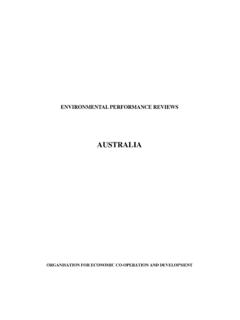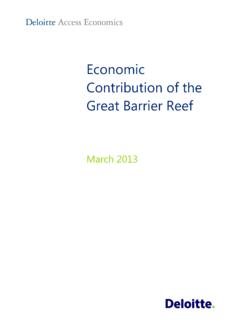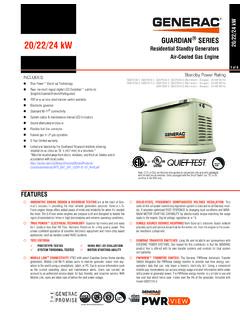Transcription of Factsheet Energy Breakdown - Environment
1 PEOPLEPRACTICESSYSTEMS1 HVAC HESS Heating, Ventilation & Air-Conditioning High Efficiency Systems Strategy September 2013 Heating Ventilation and Air Conditioning (HVAC) is generally responsible for a significant proportion of total building Energy consumption. A typical system accounts for approximately 40% of total building consumption and 70% of base building ( landlord) consumption. The pie graph in Figure 1 shows the typical Energy consumption Breakdown of an office building, being 39% HVAC, 25% lighting, 22% equipment, 4% lifts, 1% domestic hot water and 9% 1: Typical Energy consumption Breakdown in an office building1 There are a number of key end uses in HVAC systems. The bar graph in Figure 2 shows the typical end use Breakdown , including:` Fans for air circulation and ventilation account for 34% of HVAC Energy consumption` Cooling, most frequently the Energy use of chillers for the production of cooling via chilled water , but also the use of direct expansion cooling systems such as packaged air-conditioners, accounts for 27% of consumption` Heating, most frequently the Energy use of boilers for the production of hot water for heating, but also the use of electric heaters for zonal reheat, accounts for 17% of consumption` Pumps for the circulation of hot water , chilled water and condenser water , account for 16% of consumption` Cooling towers for heat rejection, being primarily the cooling tower fan Energy , account for 6% of 2: Typical HVAC end use breakdown1 The above Breakdown of HVAC Energy use is a national average.
2 In practice there is a great deal of variation amongst buildings. This variation is due to a number of factors, including the following:` Equipment Efficiency differences in efficiency can have a radical impact on Energy consumption. For some buildings the before-and-after consumption of an individual end use following an efficiency upgrade can vary by a factor of five or more. This is particularly true of fans, which are highly non-linear, and gas, which is often very inefficiently used.` Building design, orientation and location the physical characteristics of a building have a significant impact on building loads and particularly the balance between heating and cooling. For instance, a building with very limited north and west glazing will generally have lower than average cooling loads, while a building with a large unshaded west facade will have high cooling loads, particularly in the afternoons.
3 ` Type of HVAC system this can significantly alter the distribution of Energy between different end uses. The Energy use shown in Figure 2 is typical of the more common air-based air conditioning systems such as variable air volume systems with water cooled chillers. Changes in system type can produce significant changes in end use distribution, examples include:` Constant volume air-conditioning systems or variable volume systems with poor air-volume controls require FactsheetHVAC Energy Breakdown1 Guide to Best Practice Maintenance and Operation of HVAC Systems for Energy Efficiency (January 2012), Pages 36 37 Hot WaterOther34%FansCoolingHeatingPumpsCool ing Towers16014012010080604020027%17%16%6%2m /JM2 HVAC HESS Heating, Ventilation & Air-Conditioning High Efficiency Systems Strategy September 2013 Energy Breakdownfar higher fan Energy , upwards of three times that of an equivalent well-tuned variable volume system` Economy cycle most buildings with air-based air conditioning systems in temperate climates have economy cycles, which use outside air to provide free cooling when conditions permit.
4 This strategy is particularly effective in cooler climates (Melbourne, Adelaide and Canberra), but is still useful in Sydney. Buildings in these climates that do not have an economy cycle will typically have higher cooling Energy requirements, as the cooling has to be provided year-round by the cooling system rather than using cool outside air` Heating heating in most buildings is used for two purposes, being seasonal heating ( heating because it is cold outside) and reheat, which is typically used as a local adjustment to cooling. Constant air volume systems use a considerably larger amount of reheat than variable air volume systems in general. High reheat use is a classic sign of failure in a variable air volume system` Chilled beams chilled beam systems use water as the primary means of delivering cooling around the building. As a result they typically have far lower fan Energy requirements (as they utilise pumps rather than fans), however, they may also require a greater amount of cooling Energy due to the lack of an economy cycle` Air- cooled chillers air cooled chillers are significantly less efficient than water cooled chillers.
5 As a result the cooling Energy for a building using air- cooled chillers is roughly twice what would be expected for the same building with water cooled chillers.` Climate while it is true that climate has an impact on the air conditioning requirements of office buildings, the scale of effect is generally far less than commonly believed. This is due to the fact that climate only really impacts on the perimeter of the building, the centre zone being largely buffered from outside influence by the perimeter zone. Nonetheless, it is reasonable to assume that only the colder capitals have significant genuine heating loads in office buildings (the heating loads in Sydney are minimal and essentially non-existent in Brisbane) and that cooling will increase on average from cooler climates to warmer HESSThe Heating, Ventilation and Air-Conditioning High Efficiency Systems Strategy (HVAC HESS) is a ten year strategy under the National Strategy on Energy Efficiency that aims to drive long term improvements in Energy efficiency of HVAC systems Australia wide.
6 Under The Energy Efficiency Working Group, the Buildings Committee manages the implementation of the HVAC Strategy. This committee is comprised of representatives from Australian, State and Territory Strategy takes a whole of life perspective in targeting HVAC efficiency improvement, encompassing the design, manufacture, installation, operation and maintenance stages of the HVAC lifecycle. The Strategy consists of a number of complementary measures that fall under three broad initiatives People, Practices and Systems. This HVAC Energy Breakdown Factsheet specifically relates to People. It is one of a suite of factsheets developed to provide a quick overview and reference to inform, educate, and encourage Energy efficiency in the HVAC series of HVAC HESS factsheets can be found at.





